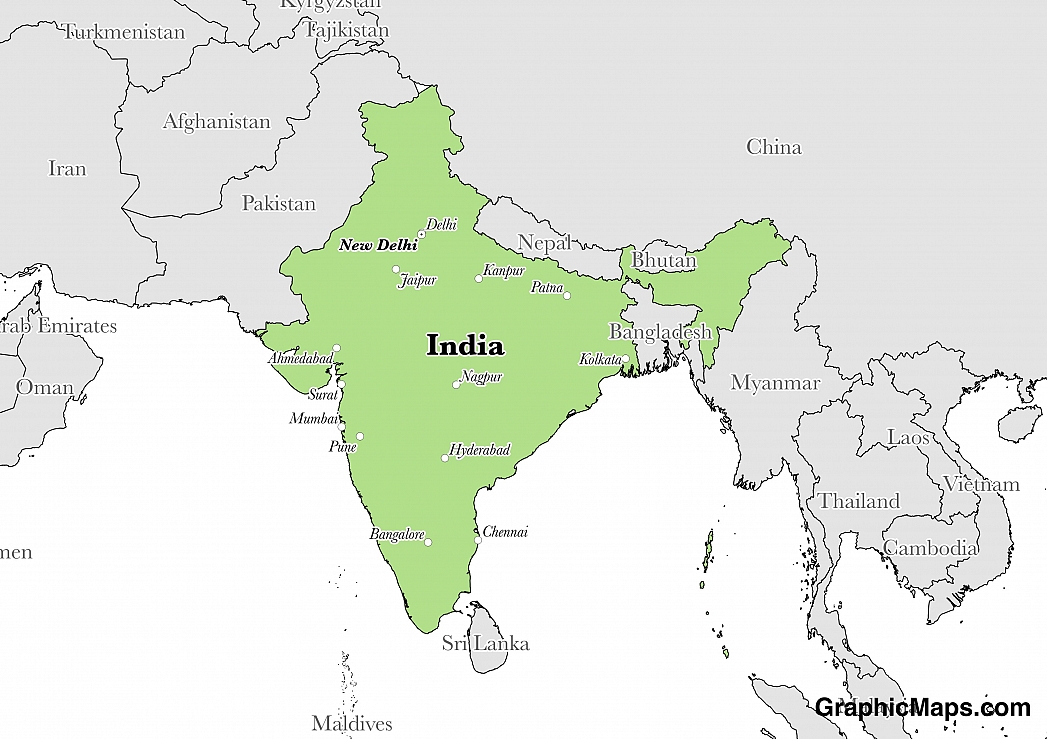The capital city of India is New Delhi, which is located in the northern part of the country, the major cities of Agra and Jaipur lie to the south of New Delhi. The foundation stone of the city was laid in 1911 by George V, the Emperor of India and initial infrastructure was designed by British architects. New Delhi became the capital city in 1931 after inauguration by the Viceroy and Governor-General of India, Lord Irwin. Before British rule, the city had served as the political and cultural hub of many ancient Indian cultures including the Mughal Empire.
The population of the Delhi region is estimated at 27.9 million in 2018 although a formal measurement has not taken place since 2011 when the population was 21.8 million. The city of New Delhi has a population of 257, 803 with a population density of 6,000 people per square kilometre (16,000 per square mile). Over 89% of residents are literate in Hindi and many residents also speak English in a professional capacity. Religious beliefs in New Delhi are overwhelmingly Hindi, with 89% of the population identifying with this religion. Other religions include Islam, Christianity, Judaism, Sikh, and Buddhists.
Access to the city through the Indira Gandhi International Airport is the most popular route for international visitors with over 35 million people using the airport during 2013 alone. New Delhi during Diwali, Maha Shivaratri, Durga Puja, and Mahavir Jayanti, to name only a few, is an amazing cultural experience for any visitor. New Delhi is also home to a number of museums, historic sites, botanical gardens, and monuments.
The climate of New Delhi is considered a humid subtropical environment that is influenced by the monsoon season. May and June are the hottest months of the year with average highs of 39 degrees Celsius (102 degrees Fahrenheit) and average lows of 25.8 and 27.9 degrees Celsius (78.4 and 82 degrees Fahrenheit). The average low in the coldest month of January is just 7.6 degrees Celsius (45.7 degrees Fahrenheit). The climate of New Delhi borders on a humid subtropical and hot semi-arid environment and during the wettest month of August, over 232 millimetres (9.2 inches) of rain can be expected.
This page was last modified on May 1st, 2018
More on Graphicmaps

Published on 2019-11-06
What is a Trade Embargo?

Published on 2019-11-04
Which Two Countries Used to Have the Same Flag?

Published on 2019-09-16
What Is the Only Two-Sided State Flag?

Published on 2019-09-16
Which Country Flag Looks Like the Texas Flag?

Published on 2019-08-29
Flags That Resemble the US Flag

Published on 2019-08-20
